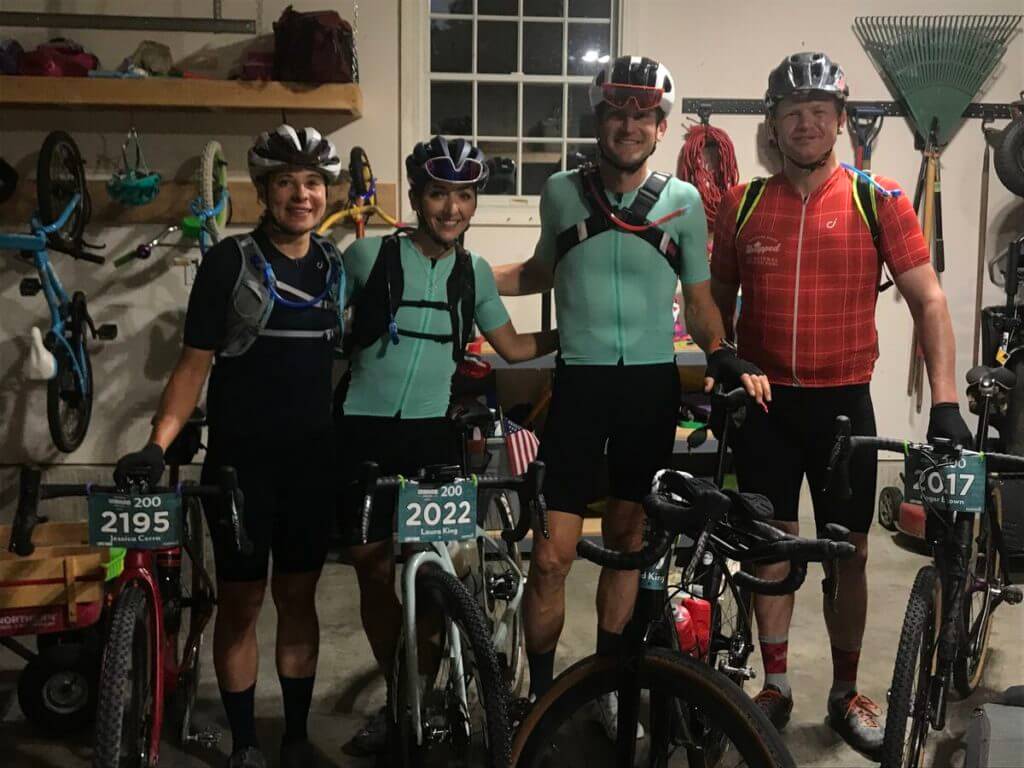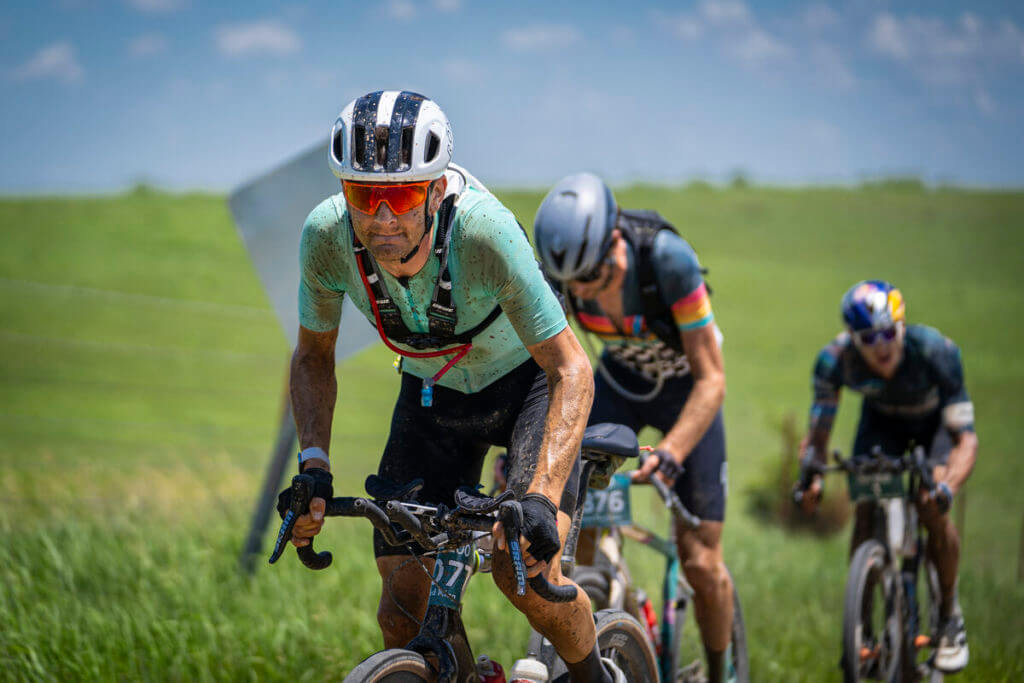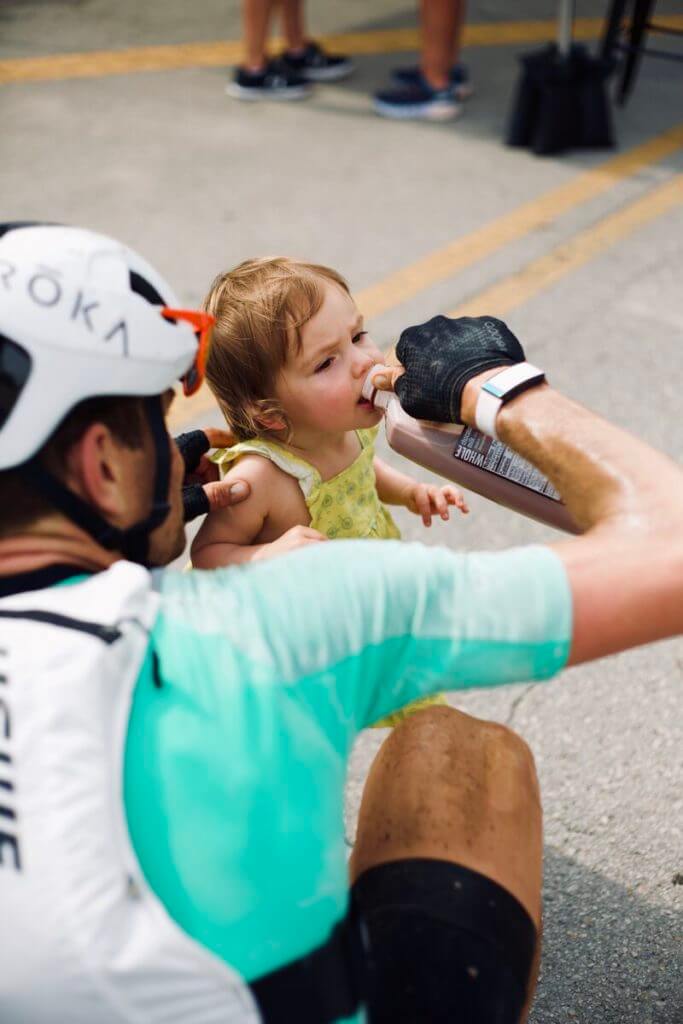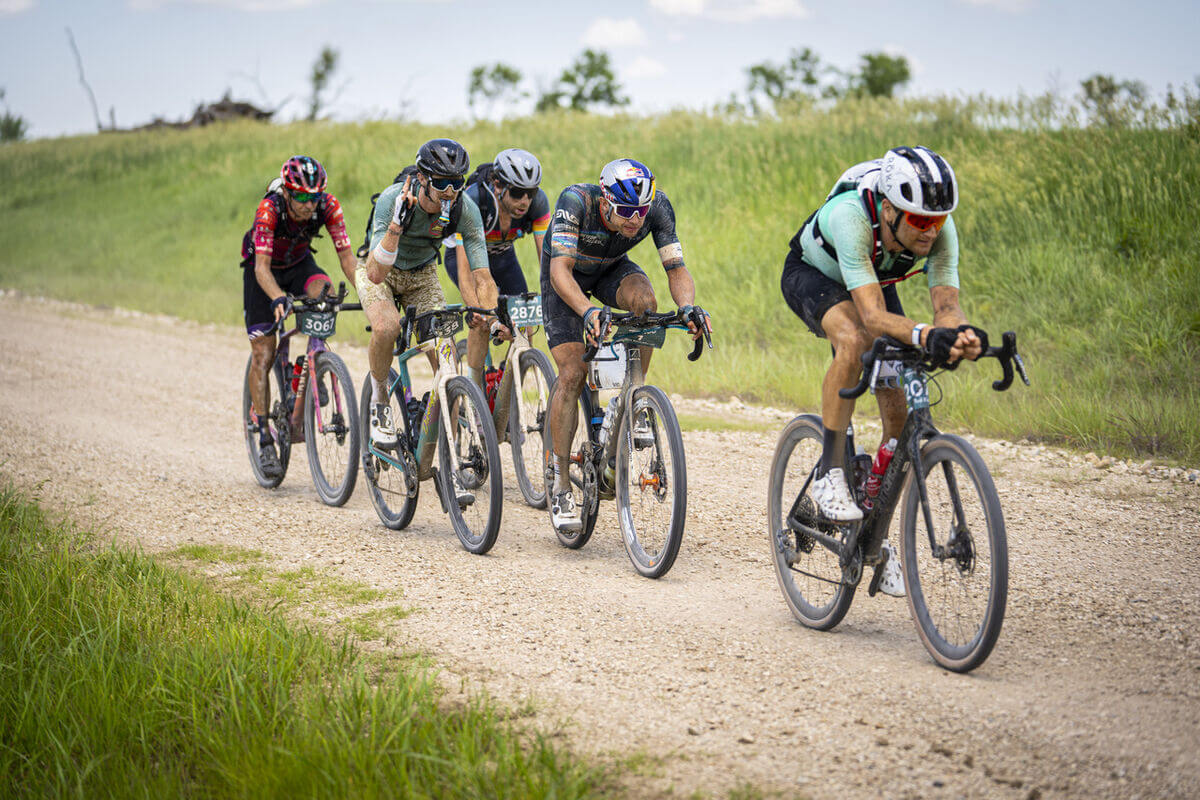This is part two of the interview exchange between two UnTapped co-founders Roger Brown and Ted King. They both took on Unbound 2021 and despite their different approaches to the event, they both made it the 206 miles from start to finish! To read part 1 where Ted interviews Roger, click here.
To read part 2 where Roger interviews Ted, enjoy the following!
Roger: What are your five words to describe Unbound 2021?
Ted: Just as I had hoped!
Roger: Nicely done. So now expand on those five words just a little bit?
Ted: With the broken collarbone less than five weeks ago, with the absolutely stacked field, with the added… ahh, energy required in looking out for my wife racing her first Unbound, you racing your first Unbound, having my daughter there for the first time, and a variety of other things, there was just a lot more going on in 2021 than in already busy previous editions.
Despite the injury, within a few days of surgery I knew that being on the start line was something I could make happen. Being competitive was still way up in the air. There are a million variables floating all around, but truth be told I think there are a lot of controllables in spite of the uncertainty. Having a really strong day start to finish is a long shot, but one that I really hoped would happen. So after a really good day for me personally, the icing on the cake was knowing you’d finish strong… since I was long since out of it and fast asleep by the time you finished.

Roger: I feel like I went into Unbound with very few expectations of what the roads were going to be like. Back to your first time racing in 2016 coming from the World Tour, what were your expectations? Had you driven the whole course? Were you surprised by how technical it was (do you even think it is technical)?
Ted: Gosh, I had no expectations that first year outside of knowing it’d be a really long day. I knew I had experience racing for a long time from the World Tour, even if a “long time” means about six and a half hours at the absolute maximum. I knew I’d ridden the spring classics on cobbled roads about eight feet wide so while there wasn’t yet a concrete idea of “gravel” to the cycling world then, I knew how to handle my bike on technical roads. And I knew that I was getting into a self-supported environment as opposed to the World Tour where you have massage therapists and race mechanics at the drop of a hat so I should be sure that I could be self-sufficient!
I definitely didn’t drive the whole course. I think in year one, I rode maybe ten miles of the course beforehand so had 190 miles of new discoveries. There was also an unforcasted deluge sometime around 3am on race day, where there was a river going through downtown Emporia for a hot second. That added some excitement to the first muddy corner of the day where riders were crashing and derailleurs were immediately ripped off. I definitely didn’t expect that level of energy.
And back to the cobbled classics, no, I didn’t find it too technical. That said, rest assured that I’m impressed Roger because 2021 was without a doubt the most technical year I’ve ever done. So job well done to you.
Roger: How is the ride different year to year? Are you more hurting some years than others? Obviously weather plays a part – was it hotter this year than others or just kind of a normal day in the hills?
Ted: This was a very similar course to 2019, although they change it every couple years in a major way. My first few years we went south before looping back home and now the past two editions go north first. That varies when and how aggressive the hills are. The wind is always a massive factor. You’ll never know if it’s coming out of the north or the south until a few days in advance, but you can pretty much guarantee it’ll be windy in one of those two directions!
One big factor in the past two years is they went from 3 pit stops every ~50 miles to just 2 at mile 69 and 156. (There’s neutral water at 102 and 124, but you can’t have additional support there from friends or family.) That’s a wicked long distance, 69 miles to 156 so that’s been something to get used to recently.
Back to weather forecasting, in my five years racing it, it’s never been cooler than expected. You might have cool days or damp days before or after race day, but every single year it’s forecasted to be somewhere in the 80s and it often scorches into the 90s. It’s funny how it works out like that.

Roger: What is your mental strategy? I definitely tried to get from point to point. When I rolled out of the first aid station and they said they would see me in 90 miles I almost fell off my bike. But then I realized that the next water stop was 35 miles, and then it was another 25 to the following water stop and then 30 to the last aid station and just focused on getting to the next point on the course. Does that work when you are going hard?
Ted: Plan for the worst and hope for the best? It sounds flip, but that’s actually true. I try to overthink most of what can go wrong and have the ability to pivot on the spot. So from tire choice to spare tubes for my spare tubes, a backup pair of glasses at the pit or back up GPS, there’s a whole lot that can go wrong and completely derail your day, so it’s nice to have backups. In that regard you create your own luck. Or maybe you create the outcome of what you do with luck – does it end your day or just a way to pivot and find a new way to the finish line.
I definitely look at the race in phases like you said. I know the first hour is easy, I know the first gnarly section is a place to be attentive and where I want to stay to the front, I know how quickly I want to get in and out of the pit stop, I know how far it is to the next gnarly section. Admittedly the middle 1/3 of the actual course is a bit of an abyss since it’s so far away from Emporia I don’t bother scouting that at all, but dividing the day up is definitely helpful.
I highly recommend avoiding mental math. That’ll kill your motivation if you say, “okay, well this headwind means I’m going 9 miles per hour and I have 87 miles to go, so at this rate it’ll take me…” Things change, conditions change, but doing that kind of arithmetic will crush your soul.
Roger: What is your nutrition strategy? Are you that much better of a cyclist that you can eat while the bike is bouncing around (without riding into the barb wire)?
Ted: I like your “sip sip, nibble nibble” suggestion. My strategy is a mix of that and a mix of all the UnTapped. I’ve been racing just on UnTapped as my sports nutrition for a half dozen years now and while it’s old hat for me to know how well it works, it’s still fun to have conversations with people about maple syrup.
For example, I had a great back and forth with my friend Laurens Ten Dam. He finished 2nd on the day is from the Netherlands, the land of the stroopwafel. Coming out of the first pit he was ecstatic to catch up to me and brag about having an UnTapped Maple Waffle in his feed bag. I then learned that there are vending machines in the Netherlands, literally 20 feet wide that have nothing but varieties of stroopwafels. Clearly we need that in Vermont vending UnTapped. Or maybe in Emporia.
Eat and drink often is a strategy. I take an UnTapped packet at 30 minutes into the race and then every hour afterwards, and a waffle starting at 60 minutes in and again every hour (Lemon is my preference on a hot day like Saturday). I drink as much as I could carry in Mapleaid – two bottles and a 2 liter hydration pack between every pit and even then you’re running dry by the time it’s time to refill. In short, you’re going to end up at a deficit no matter what so eat and drink often.
I also know in advance that I want an IPA and chocolate milk at the finish.

Thanks for the great photos to Andy Chasteen and Cameron Frazier.
